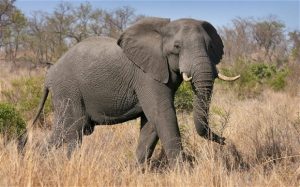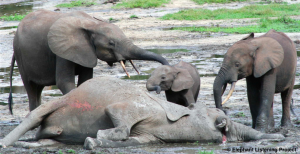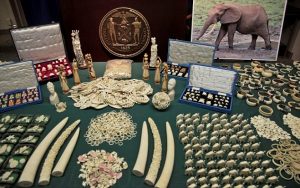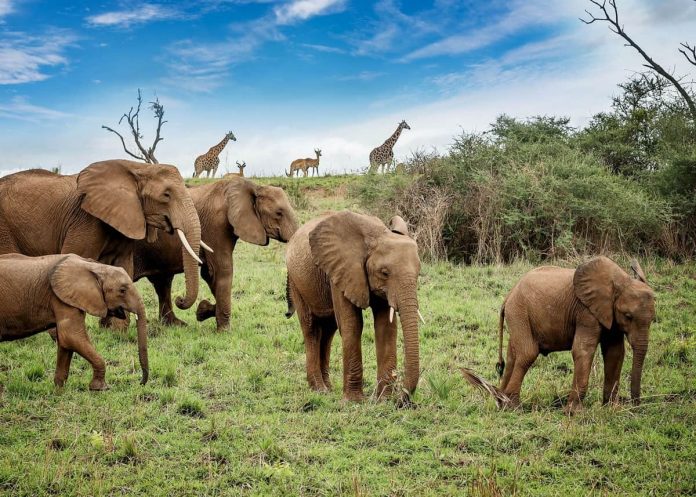Wildlife crime is unfortunately estimated to be among the most lucrative illegal trades in the world. It causes multiple threats that erode biodiversity, destroys their national assets, and local communities of income-earning possibilities from tourism and sustainable use. Its revenue is sometimes used to fuel corruption and conflict.
The 2018 London Conference on Illegal Wildlife Trade agreed on a renewed global commitment to tackle wildlife crime. It recognized the importance of increased political support at the highest levels to combat illegal trade in wildlife. Leaders from over 80 countries recognized illegal wildlife trade as “highly organized, sophisticated criminal activity” that takes place on an industrial scale and threatens regional and national security
Crawford Allan, Senior Director, America, and Wildlife Crime, stated that Wildlife crime goes beyond conservation issues, it is also a threat to national and regional security, a barrier to sustainable human development and fuel for corruption. In Africa, wildlife crime has been a conservation scourge for decades. Poaching and illegal harvesting, particularly in Africa, continues to devastate wildlife populations. Threatening survival of rhinos, elephants, pangolins, rosewoods and a wide variety of other species.
The African Elephant

This is the largest animal walking on the Earth. Their herds wander through 37 countries in Africa. They are easily recognized by their trunk that is used for communication and handling objects and their larger ears that look somewhat like the African continent. There are two sub-species of African elephants- the Savanna elephant and the Forest elephant. Savanna elephants are larger and their tusks curve outwards. In addition to being darker, forest elephants are darker and their tusks are straighter and point downward.
The presence of African elephants helps to maintain suitable habitats for many other species. In central Africa forests, up to 30 percent of tree species may require elephants to help with dispersal and germination. They play a pivotal role in shaping their habitat because of the enormous impact they have on factors ranging from freshwater to forest cover.
Trunks and Tusks
An elephant’s trunk contains about 100,000 different muscles. They are used for smelling, breathing, trumpeting, drinking and for grabbing a potential meal. At the end of each trunk, they have a fingerlike feature that they can use to grab small items.
Poaching

African elephants are one of the most heavily poached mammals in the world. Historic and current demand for ivory is the leading reason behind their slaughter. Habitat destruction, fragmentation, and rapid human development pose significant threats too.
Numbering three to five million in the last century, African elephant populations were severely reduced to its current levels. Thousands of elephants are killed every year. Those that have shown promising signs of recovery are also at risk.
African elephants are disappearing. According to the Elephant Protection Initiative, 20,000 elephants are killed each year- that’s 55 every single day-mostly for the illegal ivory trade. The overall number has declined by about one third over the last decade. Many of these elephants now live in small and isolated populations; if current trends continue, they will be wiped out in the next decade.
But why?

The illegal demand for ivory is the biggest driver of elephant poaching. Despite a global Convention on International Trade in Endangered Species of Wild Fauna and Flora (CITES) ban on international sales of ivory since 1990, thousands of elephants are killed to meet this demand of ivory in the Far East. Asia stands behind steadily increasing trend in illegal ivory and there are still thriving domestic ivory markets in Africa.
As the human population grows exponentially, habitat loss and fragmentation renders elephants homeless. Expanding human populations convert land for agriculture, settlements, and development. Commercial logging, mining, and biofuel extraction not only destroy habitat but also opens access to remote elephant forest for poachers. This hinders the elephant’s freedom to roam.
Human-elephant conflict due to the contact between the human population and elephants results in chaos that elephants invariably lose. Loss of life on both sides is also tragic. The increasing conflicts of elephants with people have been a contributor to the deaths of elephants.
Insufficient anti-poaching capacity, weak law enforcement, and corruption undermine efforts to stop the poaching and trafficking in Africa.
Limited resources combined with remote and inaccessible elephant habitats make it difficult for governments to monitor and protect elephant herds. To reduce the illegal trade in elephant products, WWF supports anti-poaching efforts within and around protected areas to provide safe havens for elephants.
To reduce the illegal killing of elephants through improved protection and management, there is a need to equip and train law enforcement teams so they can conduct regular and effective anti-poaching patrols.
African elephants are fast disappearing from the wild. Without urgent action, they could be gone within a generation. African leaders need to collaborate with anti-poaching organizations like Save The Elephants, Elephant Crisis Fund to support the most effective projects designed to stop the killing and also change the community’s perspective of elephants the importance of elephants.




